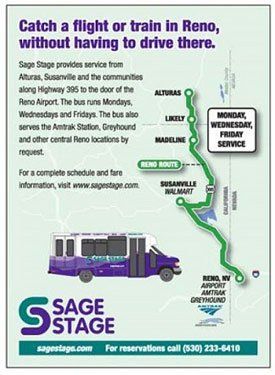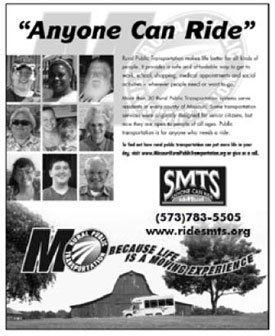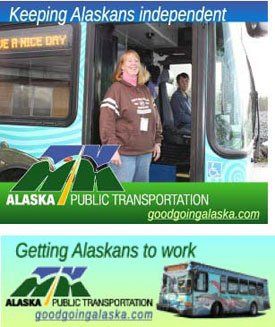Creating a page on Facebook can be a way to engage with your riders and community supporters. It can be used to promote service changes, build interest in public meetings, and engage the community in a two-way conversation. If you choose to have a Facebook page, it can be promoted on board buses, on your website, and in your printed guides. Keep in mind that someone will need to monitor the page regularly, refresh the content, and respond to comments and questions.
Marketing Toolkit
RESOURCES > TOOLKITS
Table of Contents
- Welcome
- How-to Guide For Marketing Transit
- Marketing Overview
- Marketing in the Transit Environment
- Developing a Marketing Plan
- Strategies for Marketing Public Transit
- Fundamental Communications
- Strategies for Building Awareness, Image, and Support
- Targeted Strategies for Generating Ridership
- Marketing Plan Workbook
- Marketing Tools
- Photo Library
- Graphics Library
- Templates
- Transit Benefits Statistics
- Other Tools
- Other Resources
Strategies for Building Awareness, Image, and Support
It is important to build awareness, a positive image, and support among the broad community — including non-riders as well as potential riders.
Effective methods for promoting awareness, image, and support fall into two general categories — non-paid communications channels and paid advertising. This section will describe a variety of ways that you can “get the word out” about your services. Remember, you don’t need to do all of these. Select the strategies that are the best fit for your community, target audience, and resources.
Non-Paid Communications Channels
There are many non-paid ways to build visibility and educate the public about your transit system. These include conventional news media, social media, and outreach efforts. While these strategies do not require a budget, they do require staff time to implement. Select those that are most appropriate for your community and system.
Communicating with Non-Riders — Decision Makers and Stakeholders
Public speaking is the ultimate low-cost marketing tool. Targeted, personal, and persuasive, it is an inexpensive opportunity to meet with your community, educate them about transit’s role in the community, build support, and expand your email list.
We’ve put together some transit statistics you can add to your presentations, brochures, handouts, or advertisements to help demonstrate the many benefits of public transit.
While public speaking can be used in a variety of ways, it is especially powerful as a tool for communicating with non-rider target groups such as decision makers, gatekeepers for potential rider groups, and other stakeholders in your community.
Solicit opportunities to speak to:
- Community leaders/decision makers (i.e., your City or County governing body or your Board of Directors)
- Social service coalitions or staff meetings
- Civic organizations (i.e., Rotary, Kiwanis and Soroptimist)
- Business/employer groups (i.e., the Chamber of Commerce)
Your presentations should be tailored to the group you are addressing. For example, if speaking to community leaders, focus on the benefits of transit to the broader community, like creating a mobile workforce, connecting customers with businesses, and serving the needs of those unable to drive. If speaking to human service organization staff, focus on how transit can serve their clients and show them how to use your website or Google Transit to plan trips.
PowerPoint makes it easy to customize your presentation. You can create a basic presentation and then tailor it for the particular audience. Click here for a PowerPoint template that will get you started.
You also may want to create a customized handout for these presentations. A simple flyer or brochure can be created using one of the templates provided in this toolkit. Like the presentation, the “leave-behind” should provide key facts relevant to the group you are addressing.
Presentations also provide an opportunity to collect email addresses of audience members so that you can add them to an email newsletter list or invite them to follow you on social media.
Getting the News Out
These days, there are many channels for communicating news about your system and services. These can be used together to reach a variety of target groups. Below are information and a few tips for each of the non-paid communications channels.
Conventional News Media
- News releases
- Radio Public Service Announcements
Social Media and Electronic Communications
- Videos
- Website posts
- Email blasts
To use these communications tools, start by creating a news calendar for your system. Think ahead six to 12 months about the newsworthy things your system will be doing that you want to let people know about. These might include:
- Service changes or new services
- New vehicles or facilities
- New passenger information tools
- Special event services
- Tie-ins with local events (such as the County Fair)
- Public meetings
- Promotional activities (free-ride day, holiday food drive)
- Milestones (100,000th rider, or 10-year anniversary)
Create a timeline showing when you want to communicate each message and then use that calendar to create content for each of the communication channels that are relevant in your community.
For example, promotion for a “Stuff-the-Bus” holiday food drive:
- News release about Stuff-the-Bus event, how to participate, and how the donations will be used
- Public service announcement distributed to local radio stations
- On-board posters to encourage riders to participate
- Facebook post with information and encouraging fans to participate
- Tweets about location of bus and hours when donations are being accepted
- Video of event to post on your website, Facebook or YouTube afterwards
Update the calendar periodically to reflect changes and new story ideas. For more on the basics of social media and rural transit, view the following National RTAP Resources:
- Leveraging Social Media Technical Brief - a how-to for social media, updated in May 2018.
- Social Media Best Practices Article - innovative examples of how to use social media from five rural transit agencies, released in July 2018.
- Social Media 101 Webinar Recording - a presentation by subject matter expert Susan Bregman of The Transit Wire, from September 2013.
News Releases
Articles about your system in local publications, as well as on radio and TV stations with local news coverage, can increase awareness of public transit and educate residents about what it has to offer. Making sure that local media are provided with a regular stream of information can increase news coverage about transit services. Click here for guidelines to writing a news release.
Radio Public Service Announcements (PSAs)
Local radio stations will often accept public service announcements to read on the air. These announcements need to be provided to the station as 15- or 30-second scripts. If they are time-specific (e.g., promoting service to a special event), be sure to note the dates you wish them to be aired. Click here for guidelines to writing a radio script.


Twitter provides a mechanism for “tweeting” short messages which will be received by those who “follow” your Twitter feed. Many transit systems use this as an easy, no-cost means of distributing alerts about service disruptions, changes or special events.
Videos

Simple videos, which can be created using an inexpensive video camera or even a smart phone, can be posted on your website, Facebook page, YouTube channel, or incorporated into PowerPoint presentations. Videos can highlight rider testimonials, provide how-to information (such as how to load a bike on the bike rack) or promote special events.
Website Posts
News releases which are sent to the news media also can be posted on your website, possibly linked from a “What’s New” button on your home page.
Email Blasts
Email blasts to gatekeepers, decision makers, and other community partners are another way to disseminate news and information. You might even consider creating a periodic newsletter that focuses on transit news and features.
Participating in or Hosting Community Events
A great way to connect with your community is by participating in local events. Many transit systems staff a bus display or information table at Senior Fairs, Health Fairs, Job Fairs, Earth Day Events, College Registration Events or other relevant activities where one of their target markets will be.
There is also the opportunity to sponsor events that build visibility and create news value. These types of events include:
- Stuff-the-Bus holiday food drive
- Ribbon Cutting Event for new vehicles or facilities
- Launch Event for a new service
- Earth Day Celebration (possibly a free ride day)
- Dump the Pump Day
Paid Communication Channels
Media Advertising
The use of paid media advertising is often the first thing that transit systems think of when they consider marketing. And while it may be the strategy that requires the least staff effort, it is not generally the most cost-effective of available strategies. Media advertising offers immediate, but fleeting, visibility, since ads only run as long as you keep paying for them. If you use paid media, it is critical that your message and your “look” are consistent over time and from one medium to the next in order to maximize impact.
The usefulness of a specific advertising medium corresponds to how well its audience matches your target market. If you consider paid media advertising, look to local media that reach residents within your service area.
To create the greatest impact from your advertising, focus your resources for paid media around key time periods rather than dispersing them throughout the year. In this way, the advertising will have enough visibility to increase awareness. Resources might be focused on:
- Service changes or introduction of a new service
- Introduction of new passenger information tools (such as Google Transit)
- Earth Day in April
- Dump the Pump Day in June
- Try Transit Week in September
These last three are national activities that encourage people to try transit — either for the environmental benefits or to save money. Tying in with them will allow you to capitalize on national coverage occurring at the same time.
Advertising media should be selected with an understanding of the groups that you want to hear or see your message. For example, you might create posters for advertising on buses to let current riders know about a change in the service on a specific route, use television or newspaper ads to build awareness among a wide audience, and use a youth-oriented radio station to promote a summer youth pass.
A wide variety of media advertising channels can be used to promote public transit. These include:
- Transit advertising
- Newspaper
- Radio
- TV
- Direct mail
- Posters
- Online
Following are brief descriptions of each medium and how it might be used as part of your marketing program.
Transit advertising
Transit advertising is advertising inside buses, on the exterior of vehicles and at bus shelters. One of the beauties of transit advertising is that the space comes free-of-charge; your only expenses are in production costs.
With a simple, colorful and low-cost poster displayed inside your vehicles, you can update current riders about a service change, promote an event that includes transit, or remind them of the affordability and availability of your various fare media.
Utilizing the exterior of your vehicles and bus shelters, you can build your brand and raise awareness of the system throughout the community.
Transit advertising also can be a source of revenue. Many systems sell advertising on the exterior of their buses. Keep in mind, however, that if you sell your ”packaging“ to advertise another product, you lose the opportunity to use the vehicles to build visibility and a positive image for your own services. Also take into consideration the staff time and expenses of actually selling and maintaining the transit ads. You may find that using your vehicles to build your own brand and ridership is a better use of the space.
Use your vehicles to build and enhance your brand and image
Another form of transit advertising is advertising bus shelters. Many transit agencies contract with transit advertising firms to construct and maintain bus shelters on their routes, in return for the right to sell the ad space. This can be an effective means of securing bus shelters, an amenity highly valued by riders. As part of the contract, firms will often agree to allow the transit system to advertise in unsold shelter panels. This can be a highly visible advertising medium.
Newspaper
Updated March 10, 2021
Newspapers are losing readership in urban areas, but they have a broader reach in rural areas and small towns. When your budget permits, newspaper display advertising is an excellent strategy to use to promote transit in smaller communities. Unlike classified ads, which are text only, display ads attract attention with design elements such as graphic illustrations, photos, and various font sizes and styles. A display ad in your local newspaper can support the content of your news releases and heighten their impact.
Two effective uses of newspaper ads are:
- For testimonials, which let potential riders see that people like themselves are already using transit.
- For providing updated service information, because you can include route maps or schedules to help readers see what the service offers.
Your newspaper sales rep will assist you in determining the size and placement of your ad and may offer production assistance, as well. You can design your own ad, using these newspaper ad templates.
Example of a 3-column x 10"
(approximately 1/4 pg.) color newspaper ad
Many publications also have online editions where you can place banner ads to help build awareness or to expand your news presence further.
Radio
If there are local radio stations that serve the communities within your service area (rather than stations from a larger market outside your service area), then radio advertising can be a good way to build awareness and promote ridership.
Radio advertising offers the advantage of targeting drive-time audiences. Captive in their cars, these drivers may be very interested in a better way to travel. Different radio formats may allow you to target different audiences. For example an easy listening station might reach an older audience, while a rock station will communicate with teens and college students.
Keep in mind that radio commercials are fleeting. You’ll need to repeat the same message over a period of time for people to remember it. And you won’t be able to convey the kind of detailed information (such as routes) that you can in a print ad. You can encourage listeners to call or visit your website.
Radio production is inexpensive, and the radio station you use generally will produce your commercials for free, using on-air talent to voice the spots. In addition, local stations often will augment your paid advertising at no charge by airing your commercials as public service messages as well as paid spots.
Again, the station staff will be a valuable resource to help you determine which stations suit your needs, which times of day reach the largest target audiences, and to help with creating your commercials.
Television
Television advertising can be very effective in building image, as it allows you to show transit in action serving various types of riders. However, the growing numbers of cable and satellite stations have given television audiences so many viewing choices that reaching your target markets can be very costly, as you may have to use several stations.
Production costs are considerably higher than for radio, though your local station may provide low or no-cost production services.
If your area has local television affiliates or a cable provider who sells commercial time specific to local subscribers, then television advertising may be an option for promoting your system. Generally speaking, the most effective time to purchase advertising for your system will be during local news programs.
Direct mail
The ability to target geographically, by zip code or postal carrier route, makes direct mail an appealing option for transit marketing. It means you can provide information that you know is relevant to the reader based on where they live. Another advantage is the capacity to provide detailed service information, such as route maps, schedules, and even a free-ride pass.
To be read, however, a direct mail piece has to be compelling enough to capture the recipient’s attention immediately — before it is discarded. Generally a post card or brochure that is not in an envelope and has a bold message has the best opportunity to make an immediate impact.
A service that offers mailing lists can assist you in identifying neighborhoods or districts that you want to target and methods for mailing. The US Postal Service offers a product called USPS Every Door Direct Mail, which allows you to send a flat direct mail piece (of almost any size) to every address in an area at a very low cost.
You can also develop your own lists for targeted mailings to gatekeepers and community leaders, or any other groups you want to reach.
This example is an Every Door Direct Mail piece being developed by Kern Transit. It will be English on one side and Spanish on the other as this is for a heavily Latino community.
Unlike broadcast or online strategies, a direct mail piece that is not discarded immediately has the advantage of being seen when it arrives and a second time when it is picked up to be used or thrown away. If it captures the reader’s attention and provides valuable information, it may be kept for future reference. The extra impression it makes when seen a second time or third time can be an awareness-builder.
Posters
Attractive posters displayed around town on bulletin boards and in windows can create low-cost exposure for your service. Posters measuring 11” x 17” or 8-1/2” x 11” flyers are easy to produce and effective in building visibility. Small quantities of posters usually can be printed digitally at low cost — either in-house or at a local print shop.
If using posters as a communications tool, be sure to update them regularly and remove out-of-date posters.
A small one-color poster.
Online advertising
You can reach markets of every description with online advertising. Banner ads on community websites and websites featuring community news (i.e., the community newspaper and local television affiliates) are ideal vehicles for your message. In using banner ads, the biggest “bang for your buck” depends on creating messages that are consistent with your other promotional strategies and encouraging readers to “click through” to your website to find out more about your system.
Color online ads provide clickable links to your website.

National RTAP offers one-stop shopping for rural and tribal transit technical assistance products and services. Call, email, or chat with us and if we can’t help with your request, we’ll connect you with someone who can!
" National RTAP offers one-stop shopping for rural and tribal transit technical assistance products and services. Call, email, or chat with us and if we can’t help with your request, we’ll connect you with someone who can! "
Robin Phillips, Executive Director
" You go above and beyond and I wanted to let you know that I appreciate it so much and always enjoy my time with you. The presentations give me so much to bring back to my agency and my subrecipients. "
Amy Rast, Public Transit Coordinator Vermont Agency of Transportation (VTrans)
" I always used the CASE (Copy And Steal Everything) method to develop training materials until I discovered RTAP. They give it to you for free. Use it! "
John Filippone, former National RTAP Review Board Chair
" National RTAP provides an essential service to rural and small transit agencies. The products are provided at no cost and help agencies maximize their resources and ensure that their employees are trained in all aspects of passenger service. "
Dan Harrigan, Former National RTAP Review Board Chair
" We were able to deploy online trip planning for Glasgow Transit in less than
90 days using GTFS Builder. Trip planning information displays in a riders'
native language, which supports gencies in travel training and meeting Title VI
mandates. "
Tyler Graham, Regional Transportation Planner Barren River Area Development District
Slide title
" Having a tool like GTFS Builder is really light years ahead of what it used to be at one time in terms of how fast you can put everything together. Our university students really can't imagine transit without it, so I think it's very important for us in terms of attracting that particular demographic. "
Michael Lachman, Transportation Services Manager HAPCAP - Athens Transit
Slide title
" In the past we used proprietary database software that was very challenging, very murky, and hard to update. GTFS Builder is a great opportunity to make this more user-friendly, more readily updatable and it
would enable us to show how to create a GTFS to more of the staff. "
Jaime McKay, Former Manager of Direct Services Center for Mobility Equity
Slide title
" Collaboration is a buzz word these days in the industry. On behalf of our Tribal segment, I appreciate RTAP for making Tribes a partner in industry opportunities. The organization goes over and beyond reaching partners one would not expect in a busy industry such as public transportation. Thank you for your tireless efforts! "
Franklin Akoneto, Comanche Nation
Slide title
"We are so very thankful for all your transportation training materials. Your resources are as valuable as gold!"
Holly Walton, Transportation Assistant Manager, Curative Connections
A program of the Federal Transit Administration administered by the Neponset Valley TMA
National RTAP is committed to making this website accessible to persons with disabilities. If you need assistance accessing any content on our website or need alternative formats for our materials, please contact us at info@nationalrtap.org or 781-404-5020.
by National RTAP |










